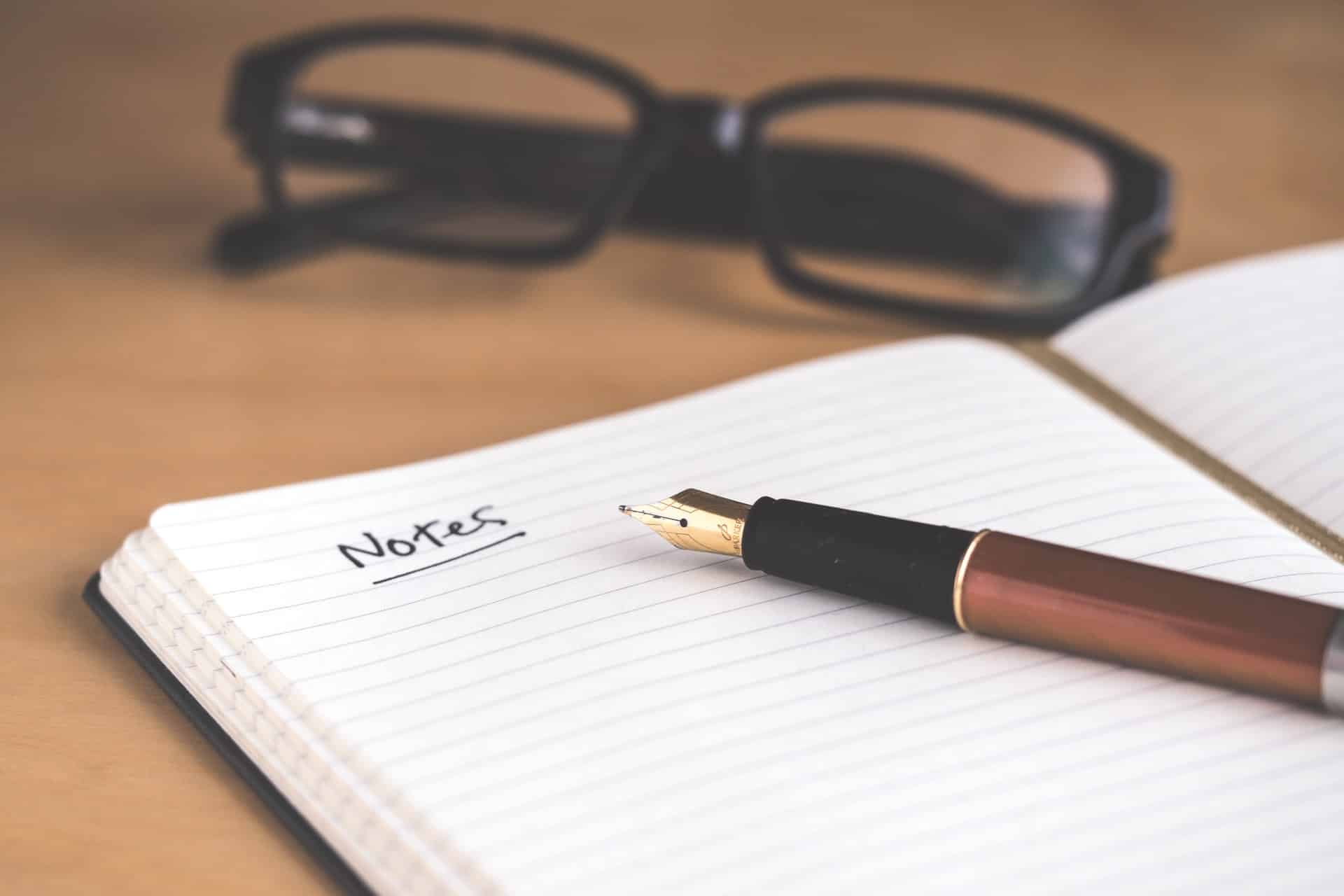Today we see together the fundamental guidelines for taking notes effectively and efficiently (i.e. without wasting too much energy!).
Sitting in a university classroom (or in a high school classroom) it is possible to observe different types of “note-takers”. Student A takes notes at such a speed that the pen almost catches fire, writing down everything Prof says; student B, on the other hand, practically takes notes with the technique that we could define as “ideograms”: three words contain 10 minutes of speech.
I am not saying that these students have the wrong method – if they pass the exams, it means that the method works in part anyway – but I am sure that theirs is not the most effective and efficient method.
Surely students A, writing down everything that is said in class, will waste a lot of time studying their very long notes, plus they will get tired of keeping that rhythm.
While Student B will waste just as much time looking in the book for information that they will not remember when reviewing their notes.
Basically, it is easy to fall into one excess or another, because taking notes is not so immediate and you have to know how to do it in the best way. And here is the reason for this article. But first, let’s put the dots over all the `I`s…

You Can’t Not Take Notes if You Want to Study Well!
If you believe that taking notes is useless, it means that in your student career you have never taken them correctly and consequently you have never benefited from them.
ADVERTISEMENT
The gesture of taking notes is an integral part of the study itself! In fact, having to write down what you are listening to during the lesson forces you to remain attentive and concentrate so as not to miss any important piece.
Not to mention that studying on the notes will be much easier and faster than having to leaf through the endless pages of the manual or scroll through the twenty-four thousand (that’s a lot, huh?) Slides of the teacher. Having said that, let’s get to the useful tips
Okay, let’s say you convinced me… but how do you do it?
Let’s go in order and see together the things to do to take notes in the best way!
Choosing the Right Tools for the Trade
The first step is to have the necessary and suitable material. The minimum equipment includes a notebook of the subject (kept tidy and preferably in loose sheets), a pen, and a highlighter. Trivial advice, right? Yet you can’t imagine how many students are able to get to class without even a meager sheet of paper!

Many students nowadays take notes in the classroom with the help of a PC or tablet, because in doing so they create notes that are immediately ordered and legible. Surely all positive aspects can induce you to do like them.
ADVERTISEMENT
But I remind you that the good old handwriting continues to have a whole series of advantages!
The Benefits of Handwriting
A study conducted by the University of Princeton and the University of California published in the journal Psychological Science (where you can download the pdf of the study for free), showed that those who take hand-written notes on paper remember much more information than those who write on a keyboard. This happens because writing by hand is an activity that inevitably slows down the person who carries it out, unlike typing which can be very fast.
Research shows that writing slowly forces you to pay more attention to what you put pen to paper and leads to the first selection of information since you can’t write everything by hand.
Otherwise, those who write on the PC are potentially able to transcribe every single word of the teacher, mechanically concentrating only on not missing even a comma, without really understanding the meaning of the topic.
Not to mention that pen and paper have a gestural immediacy that the pc cannot provide you: on a word page you certainly cannot make drawings, arrows in all directions, and other things of this kind.
The matter changes slightly if you tell me that you take notes by hand on a tablet, as many students do with the iPad Pro and the legendary Apple Pencil, or if you use the Moleskine Paper Tablet, a notebook equipped with a very special pen that in time real converts everything you write in your notebook to digital.

Make Sure You Re-read Your Notes
Obviously, in the end, you’re writing notes for yourself to re-read later but to do that you must have free time. Often, students write their notes and don’t even work through them even once. Don’t make that mistake, delegate your annoying tasks to an online essay writer and have the time to prepare your notes.









